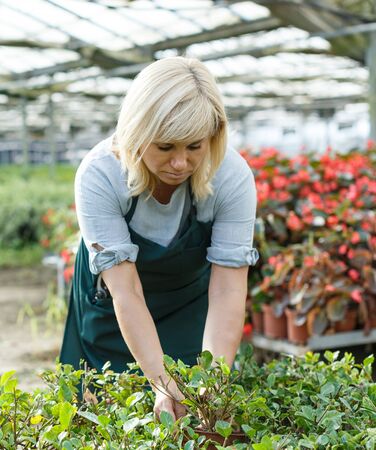1. Understanding the UK Climate for Greenhouse Growing
The British climate is famously unpredictable, which makes greenhouse growing both a rewarding challenge and a practical solution for gardeners. Unlike regions with consistent weather patterns, the UK experiences frequent shifts in temperature, rainfall, and sunlight. From mild, wet winters to cool, sometimes damp summers, these seasonal variations directly influence plant growth and greenhouse management strategies.
Regional differences also play a significant role. For example, southern England often enjoys milder winters and more sunshine, while Scotland and the North are known for cooler temperatures and higher rainfall. Coastal areas might face strong winds and salt exposure, whereas inland regions can experience sharper frosts. These factors mean that successful year-round greenhouse gardening in the UK requires careful planning and adaptation.
Despite these challenges, the UK’s moderate climate offers unique benefits. The risk of extreme heat is low compared to other countries, making it easier to maintain stable conditions inside a greenhouse. Plus, with thoughtful design and seasonal adjustments—such as using insulation during colder months or shading in summer—gardeners can create productive environments for a wide range of crops all year round.
Choosing and Setting Up Your Greenhouse
Creating a successful year-round greenhouse in the UK starts with selecting the right structure for both your gardening goals and the unique British climate. With our ever-changing weather, it’s essential to balance practicality with an eye for aesthetics, ensuring your greenhouse looks beautiful in your garden while functioning efficiently.
Greenhouse Types: Matching Style with Purpose
| Type | Best For | Aesthetic Appeal | Practical Notes |
|---|---|---|---|
| Traditional Victorian | Classic gardens, ornamental use | Elegant frames, period style | Excellent insulation; higher investment |
| Lean-to | Small spaces, urban gardens | Sleek against house walls | Uses existing wall for heat retention |
| Polycarbonate/Aluminium | Modern or budget-friendly options | Minimalist look, lightweight frames | Easy to assemble; good light diffusion |
| Wooden Frame | Cottage gardens, eco-friendly settings | Natural charm, blends with planting schemes | Requires regular maintenance; warm appearance |
Orientation: Maximising Light and Shelter in the UK Climate
The UK’s low winter sun means positioning is crucial. Place your greenhouse with the longest side facing south to capture maximum sunlight throughout the year. Avoid locations shaded by trees or buildings, as light is precious during darker months. If possible, choose a sheltered spot to protect from prevailing winds—this helps maintain stable temperatures inside.
Essential Features for Year-Round Success
- Ventilation: Good airflow prevents overheating and reduces humidity-related diseases. Opt for adjustable roof vents and louvred side windows.
- Insulation: Double glazing or bubble wrap lining helps retain warmth during chilly UK winters without sacrificing natural light.
- Bases and Flooring: A solid base (such as concrete or paving) adds stability and discourages pests. Raised beds or staging can help organise plants attractively and efficiently.
- Water Collection: Install guttering and water butts to make the most of rainfall—a sustainable choice that’s ideal for eco-conscious British gardeners.
Aesthetic Tips for Seamless Integration
Select a frame colour that complements your home or garden scheme—soft greens, greys, or classic white work well in most British settings. Surround your greenhouse with cottage perennials or structured topiary for an inviting transition between built structure and nature. By blending beauty with function, you’ll create a greenhouse that enhances both your garden’s productivity and its overall charm.

3. Soil, Compost, and Watering Solutions
Creating the right foundation for year-round greenhouse growing in the UK begins with understanding your soil, making the most of organic compost, and developing efficient watering habits. The British climate often brings persistent rain and cooler temperatures, so tailoring your approach is key for healthy plants.
Preparing Soil Mixes for UK Conditions
Start by choosing a well-draining soil mix, as excess moisture is a common challenge in the UK. A blend of loam-based compost with added sharp sand or perlite works well to prevent waterlogging while retaining nutrients. Regularly check pH levels—most vegetables prefer slightly acidic to neutral soil (pH 6.0–7.0). If your local soil is heavy clay, amend it with organic matter and grit to improve structure and aeration.
Using Organic Compost
Homemade compost is ideal for greenhouse gardening. Use kitchen scraps, grass clippings, and autumn leaves to create nutrient-rich compost that supports strong growth and natural pest resistance. Well-rotted manure can also be used but ensure it’s fully decomposed to avoid burning young roots. Apply a thick layer of organic mulch around your plants to conserve moisture and suppress weeds, especially during drier spells.
Managing Water Efficiently
Watering in a UK greenhouse requires balance. Overwatering is a risk due to the humid climate, so always check if the top inch of soil feels dry before watering again. Consider installing water butts to collect rainwater from the roof—a sustainable choice that also reduces mains water use. Drip irrigation systems are excellent for delivering consistent moisture directly to plant roots, reducing fungal problems and saving time.
Extra Tips for British Greenhouse Growers
- Water early in the day to reduce humidity overnight and prevent mould.
- Avoid splashing water on leaves; focus on the base of each plant.
- Regularly aerate your greenhouse by opening vents on mild days.
Summary
By preparing quality soil mixes, using organic compost, and mastering efficient watering techniques tailored for the British climate, you’ll set up your greenhouse for success all year round.
4. Sowing and Planting Throughout the Year
To make the most of your greenhouse in the UK, it’s essential to plan your sowing and planting with each season in mind. The ever-changing British weather means timing is everything—whether you’re growing classic vegetables, fragrant herbs, or vibrant blooms. Below is a practical, season-by-season guide to help you maximise your greenhouse potential all year round.
Spring (March – May)
Spring marks the start of the main growing season. The warmth inside your greenhouse allows for an early start compared to outdoor planting.
| What to Sow/Plant | Notes |
|---|---|
| Tomatoes, cucumbers, aubergines | Sow seeds indoors for an early harvest |
| Lettuce, spinach, rocket | Sow directly for fresh salads |
| Sweet peas, marigolds | Start early for summer colour |
Summer (June – August)
Your greenhouse will be at its most productive. Focus on nurturing heat-loving crops and succession sowing for continual harvests.
| What to Sow/Plant | Notes |
|---|---|
| Basil, coriander, parsley | Sow every few weeks for a steady supply |
| Peppers, chillies | Transplant seedlings started earlier |
| French beans, courgettes | Sow for late summer cropping |
Autumn (September – November)
As temperatures drop, use your greenhouse to extend the growing season and prepare for winter crops.
| What to Sow/Plant | Notes |
|---|---|
| Pak choi, winter lettuce, chard | Sow now for hardy greens through winter |
| Dwarf broad beans | Sow in pots for an early spring crop |
Winter (December – February)
The pace slows down but there’s still plenty you can do under cover. Focus on cold-hardy plants and preparing for next spring.
| What to Sow/Plant | Notes |
|---|---|
| Mizuna, mustard greens, lamb’s lettuce | Sow in trays or borders; enjoy mild flavours in winter salads |
| Onion sets, garlic cloves | Start off for a head start next year |
A Few Tips for Success:
- Rotate crops each season to prevent disease build-up.
- Keep seed packets handy and label trays clearly with variety and date sown.
- If space allows, stagger sowings every 2–3 weeks for a continuous supply.
- Add flowers such as nasturtiums or calendula among veg to attract pollinators and brighten your space.
- Monitor temperature and humidity—open vents or add shading as needed during hot spells.
The Takeaway:
Your greenhouse is a year-round haven for both productivity and creativity. With mindful planning by season, you’ll enjoy homegrown food and colourful displays whatever the British weather brings.
5. Managing Temperature and Light
Keeping your greenhouse at the right temperature and light level is essential for successful year-round growing in the UK. With unpredictable weather—sunny spells, heavy rain, frost, and the infamous British grey skies—you’ll need to be clever with simple, practical strategies to maintain ideal conditions for your plants.
Adapting to the British Weather
The UK climate is well known for its rapid changes. On sunny days, greenhouses can quickly become too hot, while cloudy or frosty days may leave your crops under stress. It’s important to regularly monitor both temperature and light using a reliable thermometer and a light meter if possible.
Sun Protection Strategies
During rare hot spells, ventilate by opening roof vents and doors to allow excess heat to escape. Shade paint or mesh can be used on the glass during summer months to prevent scorching delicate plants. For extra control, consider installing automatic vent openers that react as temperatures rise.
Maximising Light on Grey Days
With so many overcast days in Britain, maximising natural light is key. Regularly clean your greenhouse glazing inside and out to let in as much sunlight as possible. Arrange plants on tiered shelving or staging to avoid overcrowding and ensure each one gets its share of available light. For winter growing, supplement with LED grow lights designed for horticulture—these are energy-efficient and help boost growth when daylight hours are short.
Managing Cold and Frost
Frost can be a challenge from late autumn through spring. Insulate your greenhouse with bubble wrap lining along the walls and roof, paying special attention to gaps where cold air might sneak in. Use a minimum/maximum thermometer to keep track of night-time lows. For extra protection, deploy electric or paraffin heaters with thermostats set just above freezing—this prevents damage without wasting energy.
Quick Tips for Everyday Success
- Open vents early on warm mornings but close them before dusk to trap heat overnight.
- Avoid placing plants directly against cold glass.
- Use thermal curtains or horticultural fleece inside for added insulation on chilly nights.
By combining these straightforward measures, you’ll create a stable environment for your crops despite whatever the British weather throws at you—ensuring healthy growth all year round.
6. Common Pests, Diseases, and Preventative Care
Greenhouse gardening in the UK offers many advantages, but it also presents challenges such as pests and plant diseases that thrive in protected environments. By adopting practical and eco-friendly approaches, you can maintain a healthy greenhouse year-round.
Typical Greenhouse Pests in the UK
Among the most common pests are aphids, whiteflies, red spider mites, and slugs. These invaders can quickly multiply in the warm, humid conditions of a greenhouse. Monitoring your plants regularly is crucial for early detection. Use yellow sticky traps to monitor flying insects and handpick visible pests whenever possible.
Eco-Friendly Pest Control Solutions
Opt for natural predators such as ladybirds and lacewing larvae to control aphid populations. Nematodes are effective against soil-dwelling pests like fungus gnats. For fungal issues, good ventilation is key—open vents on mild days to reduce humidity and discourage mould growth. Avoid chemical sprays; instead, use organic soap solutions or neem oil where necessary.
Prevention Is Better Than Cure
Always keep your greenhouse tidy by removing dead leaves and spent plants promptly. Clean pots and trays with hot soapy water before reusing them to prevent disease carryover. Water early in the day to allow foliage to dry before nightfall, reducing the risk of mildew and rot.
Integrated Health Management Practices
Rotate crops within the greenhouse beds each season to minimise soil-borne diseases. Choose disease-resistant plant varieties suited for the UK climate. Encourage biodiversity by growing companion plants such as marigolds or nasturtiums, which deter pests naturally.
Seasonal Checks and Maintenance
Inspect your greenhouse thoroughly at the start of each season. Check for draughts or leaks that could let pests inside. Replace any damaged glass or seals. Clean all surfaces—including paths and benches—with an eco-friendly disinfectant to remove lingering spores or eggs.
By combining vigilant monitoring, natural pest control methods, and regular maintenance routines, you can enjoy thriving greenhouse crops throughout every season while supporting a healthier environment.
7. Harvesting and Enjoying Your Greenhouse Produce
Gathering Your Crops: Timing and Technique
One of the joys of greenhouse gardening in the UK is enjoying fresh, home-grown produce throughout the year. For the best flavour and texture, harvest your crops when they are at their peak ripeness. Tomatoes should be picked when fully coloured and just slightly soft, while cucumbers taste best when firm and glossy. Leafy greens like lettuce or spinach are sweetest in the morning, just after watering. Use clean, sharp scissors or secateurs to minimise damage to plants and encourage further growth.
Storing Your Greenhouse Bounty
Proper storage helps you make the most of your hard work. Soft fruits such as strawberries or raspberries are best enjoyed fresh but can be frozen on trays and stored in containers for later use. Root vegetables like carrots or beetroot keep well in cool, dark places with a bit of soil left on them. Herbs can be air-dried or frozen in ice cube trays with a splash of water or oil for easy use in cooking.
Tip:
Avoid washing crops until you’re ready to eat them, as excess moisture can shorten their shelf life.
Making the Most of British Culinary Traditions
With your greenhouse produce, why not embrace classic British dishes? Fresh tomatoes and basil are perfect for a homemade soup or bruschetta. Courgettes can star in a traditional summer ratatouille or be grated into savoury muffins. Rhubarb is wonderful stewed for a crumble—add a touch of ginger for extra warmth. Don’t forget chutneys and preserves: green tomatoes make an excellent autumnal chutney, ideal for pairing with mature British cheeses.
Share the Rewards
Greenhouse growing is about more than just food—it’s about community. Share surplus crops with neighbours or swap seeds and recipes with fellow gardeners. Not only does this foster connection, but it also celebrates the rich tradition of sharing and self-sufficiency found across Britain’s gardening culture.


